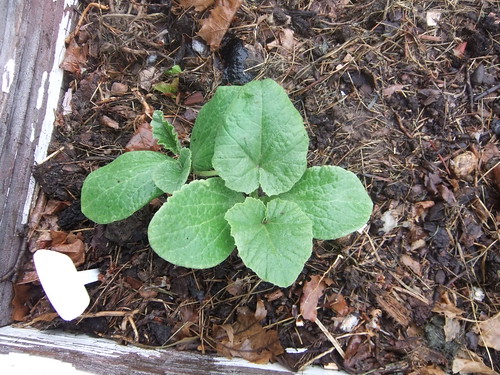Post by nathanp on Dec 18, 2015 15:21:57 GMT -5
Here is the contects of the USDA document. A note from Timothy Kazmierczak, USDA Horticulturalist:
note that this is a general guideline. We are not particularly religious in following it exactly. Rather, it is simply developed as a baseline.
POTATO PLANT PRODUCTION AT USDA POTATO GENEBANK
LIGHT CONTROLS
Short Day season:
16 hour photoperiod. Lights on 30 minutes after sunrise. Lights on again one hour before sunset. If it is cloudy or we are reading below 120 RAD/m2, then we turn our lights on during the daytime. Otherwise, when it is bright outside, the lights are off. Also note that some of our accessions are very sensitive to shade. Give them the best, clear light as possible. Don’t overcrowd to where they compete for light.
Long Day Season (summertime in northern hemisphere):
We rarely use supplemental lighting in the summer months.
TEMPERATURE CONTROLS
Seedling Initiation and Vegetative Growth, including Tissue Culture
70F 24/7 until flower buds start to form (about 6-9 weeks; Prime flowering is at weeks 12 to 18 post seed planting).
Flower Pollination/Fruit Set
68F Day and 55F Night. This is about a 2-4 week period (usually between weeks 8-12).
Fruit Development after pollination
68F Day and 64 Night. Too cold of nights decreases fruit/seed quality.
MEDIA AND FERTILIZER REFERENCE
Promix BX Mycorrhizae (60# Bale) mixed with:
- 3 1/8 cups of Osmocote Plus 5-6M (15-9-12) with Micronutirent
- 3.5 gal water
Fertigation:
- Tuber production on common varieties does not require fertigation. Tubers are sufficiently produced with a slow release (Osmocote) fertilizer mixed into the media as described in ratio above.
- Seed increase material require fertigation for successful seed increase.
Fertigation Rate:
- Fertigate 7 days per week – no flushing. All pots are individually hand-watered.
- Dramm “Siphonject” Siphon Mixer (20:1) attached to irrigation hose. Siphon tube is placed in 5-gal solution pail
Fertilizer:
20-20-20 plus trace minerals soluble fertilizer
Plant Marvel’s “Nutriculture Spoon-Feeding Soluble Fertilizer”
Solution Concentration:
3 TBL Nutriculture/ 1 gal water
MISCELLANEOUS NOTES
Temperatures above 90F stop flowering and fruiting (it might even be 85F).
Don’t overwater, don’t underwater. Give them just enough water to get through a 24 hour period. Water in the AM. Water only the media. Don’t water the plant or its leaves or flowers. If the potted plant does not need water for 2 days or more, then it is overwatered.
Keep humidity low. Increase air circulation.
Some pesticides might cause phytotoxicity. Have a careful eye up to two weeks after an application.
Our optimal pollination season is Spring; summer is fair; Fall is good; Winter is fair to good. This is due to seasonal sun lighting. Overhead lights help, but there is nothing like sunlight.
Pollen uptake supplement: 2,4 D (4 mls of 1000ppm 2,4-D into 100 mls water plus spreader sticker. Of course, proper cultural controls are paramount.
LIGHT CONTROLS
Short Day season:
16 hour photoperiod. Lights on 30 minutes after sunrise. Lights on again one hour before sunset. If it is cloudy or we are reading below 120 RAD/m2, then we turn our lights on during the daytime. Otherwise, when it is bright outside, the lights are off. Also note that some of our accessions are very sensitive to shade. Give them the best, clear light as possible. Don’t overcrowd to where they compete for light.
Long Day Season (summertime in northern hemisphere):
We rarely use supplemental lighting in the summer months.
TEMPERATURE CONTROLS
Seedling Initiation and Vegetative Growth, including Tissue Culture
70F 24/7 until flower buds start to form (about 6-9 weeks; Prime flowering is at weeks 12 to 18 post seed planting).
Flower Pollination/Fruit Set
68F Day and 55F Night. This is about a 2-4 week period (usually between weeks 8-12).
Fruit Development after pollination
68F Day and 64 Night. Too cold of nights decreases fruit/seed quality.
MEDIA AND FERTILIZER REFERENCE
Promix BX Mycorrhizae (60# Bale) mixed with:
- 3 1/8 cups of Osmocote Plus 5-6M (15-9-12) with Micronutirent
- 3.5 gal water
Fertigation:
- Tuber production on common varieties does not require fertigation. Tubers are sufficiently produced with a slow release (Osmocote) fertilizer mixed into the media as described in ratio above.
- Seed increase material require fertigation for successful seed increase.
Fertigation Rate:
- Fertigate 7 days per week – no flushing. All pots are individually hand-watered.
- Dramm “Siphonject” Siphon Mixer (20:1) attached to irrigation hose. Siphon tube is placed in 5-gal solution pail
Fertilizer:
20-20-20 plus trace minerals soluble fertilizer
Plant Marvel’s “Nutriculture Spoon-Feeding Soluble Fertilizer”
Solution Concentration:
3 TBL Nutriculture/ 1 gal water
MISCELLANEOUS NOTES
Temperatures above 90F stop flowering and fruiting (it might even be 85F).
Don’t overwater, don’t underwater. Give them just enough water to get through a 24 hour period. Water in the AM. Water only the media. Don’t water the plant or its leaves or flowers. If the potted plant does not need water for 2 days or more, then it is overwatered.
Keep humidity low. Increase air circulation.
Some pesticides might cause phytotoxicity. Have a careful eye up to two weeks after an application.
Our optimal pollination season is Spring; summer is fair; Fall is good; Winter is fair to good. This is due to seasonal sun lighting. Overhead lights help, but there is nothing like sunlight.
Pollen uptake supplement: 2,4 D (4 mls of 1000ppm 2,4-D into 100 mls water plus spreader sticker. Of course, proper cultural controls are paramount.

